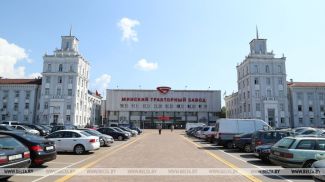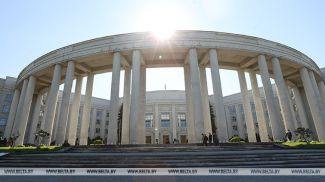MINSK, 5 May (BelTA) – Most of the financial stability indicators are in the safe range, BelTA learned from the Information and Public Relations Office of the National Bank of the Republic of Belarus (NBRB) after an expanded participation session of the NBRB Board on 5 May.
At present most of the financial stability indicators are in the safe range. The steady uninterrupted operation of Belarus' financial sector has been secured, the source said.
The main threats to financial stability are related to the realization of accumulated credit risks in conditions of the worsening financial state of enterprises and lower business activity.
As of 1 April 2016 the share of troubled assets in the Belarusian banking industry reached 11.5%, negatively affecting financial results and the capital of banks.
The problem of credit risks is being addressed through joint discussions involving the National Bank of the Republic of Belarus, the government, commercial banks, and top borrowers. Banks have helped most of the companies that have encountered the problem of the worsening financial situation by refinancing their debts and redistributing the debt burden taking into account their revenues.
At the same time it is impossible to reduce credit risks only at the expense of the banking industry. In order to prevent performance indicators of Belarusian banks from getting worse, it is necessary to resolve the problem of defaulting loans, it is necessary to actively resort to the rehabilitation of viable structures and the removal of chronically ineffective enterprises.
It was noted during the session that this year goals of the monetary management policy have not changed much. The policy is primarily aimed at supporting macroeconomic balance, ensuring financial stability, and reducing inflation processes. All monetary management instruments are utilized to prevent inflation from exceeding 12%. In Q1 2016 the intermediate reference point of the monetary policy — an increase in broad money supply — was within the specified range.
In Q1 2016 inflation dynamics was above the projections. In January-March consumer prices rose by 5.7% while the forecast said consumer prices would rise by only 5%. The fact that the actual level of annual inflation has exceeded the inflation target is explained by a short-term surge of inflation processes at the beginning of the year due to an administrative increase in prices and short-term effects of the currency exchange factor. Since these factors are not likely to be repeated, inflation processes are expected to slow down. The National Bank of the Republic of Belarus believes that in June inflation will approach 12% in annual terms.
Dynamics of the exchange rate of the Belarusian ruble considerably affected economic processes in the country in Q1 2016. In January-March the Belarusian ruble lost 12.7% against the basket of currencies. Most of the value was lost in January (11.4%).
In Q1 2016 fixed-term deposits of individuals in Belarusian rubles dropped by Br1.4 trillion, with deposits in foreign currencies down by $153 million. The NBRB believes that Belarusians tap into their savings to keep their spending unchanged in conditions of reduced earnings. In January Belarusians were also influenced by devaluation expectations and changes on the deposit market. The influence of these factors is falling. The rising volume of new deposit contracts confirms it. For instance, in January the volume of new deposits totaled Br2.4 trillion while in March the figure rose to Br3.6 trillion.











